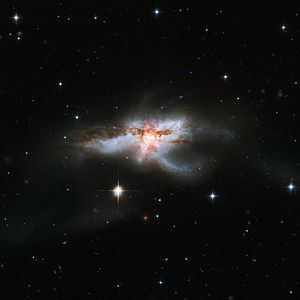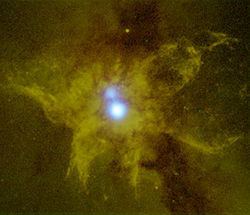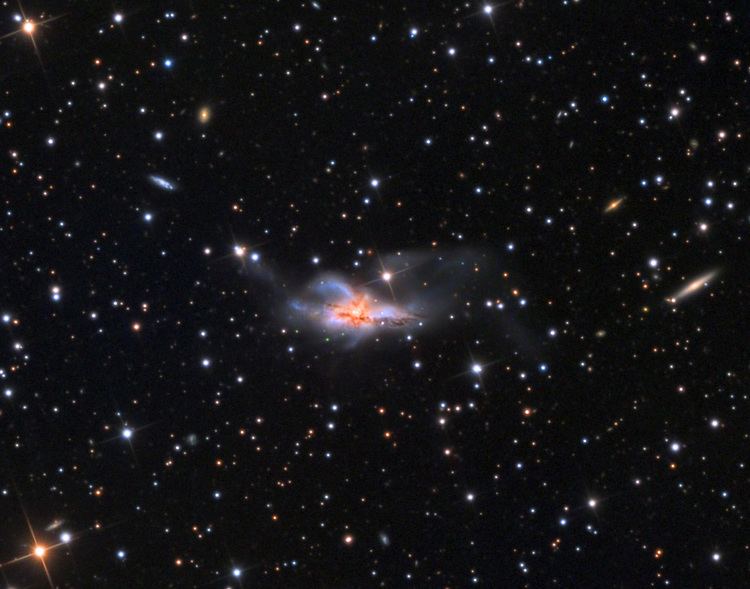Right ascension 16 52 58.9 Redshift 7339 ± 9 km/s Type I0 pec Magnitude 12.8 Apparent magnitude (V) 12.8 | Declination +02° 24′ 03″ Distance 400 Mly Apparent size (V) 2′.1 × 1′.1 | |
 | ||
Similar Arp 220, Arp 299, Starburst galaxy, NGC 4945, Markarian 231 | ||
Ngc 6240 in 60 seconds
NGC 6240 is a nearby ultraluminous infrared galaxy (ULIRG) in the constellation Ophiuchus. The galaxy is the remnant of a merger between two smaller galaxies. The collision between the two progenitors has resulted in a single larger galaxy with two distinct nuclei and a highly disturbed structure, including faint extensions and loops.
Contents
- Ngc 6240 in 60 seconds
- Ngc 6240 ultraluminous infrared galaxy
- Star formation versus supermassive black holes
- X Ray Observations
- References

Ngc 6240 ultraluminous infrared galaxy
Star formation versus supermassive black holes

The power sources of ULIRGs in general has been greatly debated. Infrared light from galaxies generally originates from dust in the interstellar medium. ULIRGs are abnormally bright in the infrared. The infrared dust emission in ULIRGs is over one trillion times more luminous than the Sun (i.e. it has an infrared luminosity of 1012 L☉). Astronomers have speculated that either intense star formation regions or active galactic nuclei (which contain supermassive black holes) may be responsible for the intense dust heating that produces this emission, although the general consensus is that both may be present in most ULIRGs. Studying the exact nature of ULIRGs has been difficult, however, because the dust in the centers of these galaxies obscures both visible and near-infrared starlight and because theoretical models of both starbursts and active galactic nuclei have demonstrated that they may look similar. Because NGC 6240 is a nearby example of such a ULIRG, astronomers have studied it intensively to understand its power source.
X-Ray Observations

Observations performed by Stefanie Komossa and collaborators with the Chandra X-Ray Observatory have detected strong hard X-ray emission from both of the nuclei. The intensity of this emission and the presence of emission from lowly ionized or neutral iron indicate that both of the nuclei are active galactic nuclei. Presumably, these are the black holes that were originally at the centers of the two merging galaxies. Over the course of millions of years, the two black holes are expected to come closer together and form a binary supermassive black hole.

